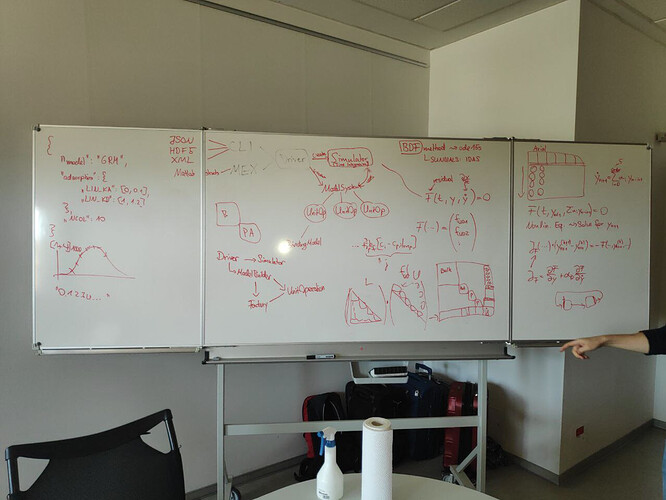Recap
The following issues were merged: 
- Feature/fix flip flow by schmoelder · Pull Request #75 · modsim/CADET · GitHub
- Return inlet concentration instead of first axial cell by schmoelder · Pull Request #74 · modsim/CADET · GitHub
- No adsorption by jazib-hassan-juelich · Pull Request #72 · modsim/CADET · GitHub
Agenda
Fix compile warnings by jayghoshter · Pull Request #76 · modsim/CADET · GitHub
- More warnings show up after @sleweke set some compile flags
- Unused Variables: In some cases, variables are left unused in the release build due
cadet_assert()only being defined inDebugbuilds. We can fix this by not assigning the variables in theReleasebuilds (preprocessor macros). Or just hiding the warnings. - Fallthrough in switch: (Discussed on Telegram with @sleweke) An implementation of the siphash() function causes this warning. The fallthrough is intentional, so we can either switch off the warning, or hide it with the
[[fallthrough]]decorator. The decorator, however, isc++17standard and we currently enforce a minimum ofc++14
Add MixerSplitter UnitOperation by schmoelder · Pull Request #46 · modsim/CADET · GitHub
Seems not to be possible with the current implementation. Waiting for confirmation by @s.leweke whether this can be hacked into the ModelSystem/connections.
Write out state for every unit operation separately. by schmoelder · Pull Request #73 · modsim/CADET
(@j.hassan)
In the current PR draft, some files were commited which need to be removed. Also, we need to rebase, because changes have been merged to master. Then, as explained in the issue, a function needs to be added to the ModelSystem which returns the start index and length of the model’s slice in the global state vector.
Misc
Advanced Git usage
(@j.rao can you please add your gists/resources)
- Create and delete branches
- Merge/Rebase
- Add/remove remote repositories
What exactly is a DOF in the context of CADET?
Number of state variables of a unit operation.
What exactly is a stride in the CADET UnitOperation model?
Admittedly I forgot to ask but maybe someone can elaborate because I’m curious.
Developer’s Guide
Here is a photo from the first CADET Workshop, where @s.leweke explained the architecture of CADET. Maybe we can use this as a basis for a UML/Overview diagram in our developer’s guide.
